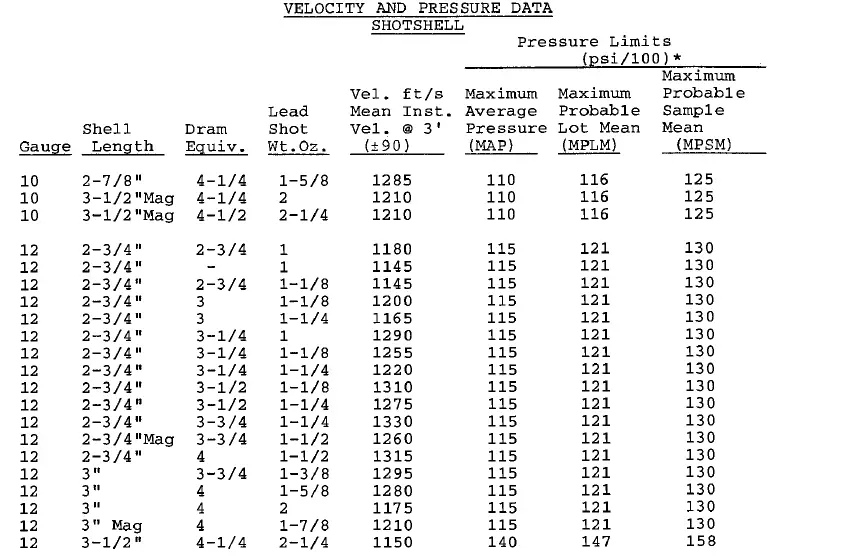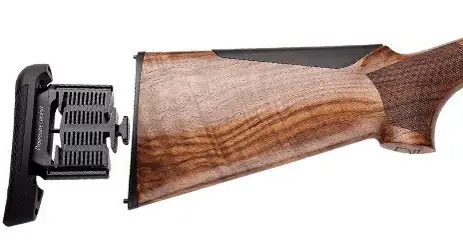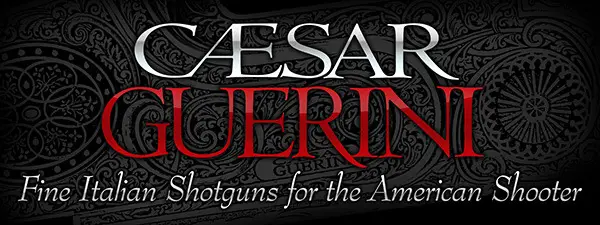


Recoil and the Autoloading Shotgun
Shooters really hate
recoil. The “recoil reduction” industry is a huge one, with
everything from pads, to shirts, to Gracoils, Precision Fit stocks, and
Soft-Touch stocks. It is hard to find something that doesn't claim to
be low recoil, from wads, hulls, propellants, and the tortured notion
of forcing cones, ports, and overbored barrels. With shotguns, few things
are precise. There should be a whole classification of accessories and
modifications titled “Not Enough To Matter.”
Nevertheless, main reason to use hunting and target shooting shotguns is to have fun. More effective shotshells have more pellets in them, there is no escaping that. You cannot have more pellets in a pattern than leaves the muzzle, and patterns are what smash targets and cleanly drop birds. Yet, otherwise sane-appearing folks try to shoot 7/8 oz. (or lighter) payloads out of 12 gauges. These, sometimes, are the very same folks that buy 3-1/2 inch chambered shotguns, for 3 inch unfolded length hulls just cannot hold enough stuff. Yet, some of us want our 3-1/2 inch autoloaders to cycle with 7/8 oz. loads, it is as if no one has ever heard of the 20 gauge. A 7/8 oz. load is not just a 20 gauge load, but a 20 gauge target load at that. SAAMI has long published the standards for shotshells in the United States.

The slowest, lightest,
wimpiest 12 gauge load in the SAAMI lead shotshell data is an 1145 fps
1 oz. load. Why is it that we seek to run anemic loads through shotguns?
It wouldn't be because of American Skeet or A.T.A rules, for 1-1/8 oz.
loads are standard fare. It wouldn't be the American version of sporting
clays, for 1-1/8 oz. 1300 fps sporting clays loads are readily available.
The A.T.A. Speed limit is about 1250 fps, but that isn't much of a spec
at all, for notice that SAAMI three foot instrumental velocities are plus/minus
90 fps. Velocity
limitations vary all over the place in various clay sports, as you can
see.
Ammunition
Limits & Specifications by Discipline
ATA
Doubles
32g – max. size 7½ (2.4mm) – max. velocity 1290 fps.
ATA Trap
32g – max. size 7½ (2.4mm) – max velocity 1290 fps.
DTL Trap (full-use)
28g – max size 2.6mm (English 6)
English Sporting
28g – 2mm (English 9) to 2.6mm (English 6)
FITASC Sporting
28g – max. size 2.5mm
FITASC Universal Trench
28g – max. size 2.5mm
NSSA Skeet
32g – max. size 2.5mm
Olympic Double Trap
24g – max. size 2.6mm
Olympic Skeet
24g – max. size 2.6mm
Olympic Trap
24g – max. size 2.6mm
Shot diameters, payloads, and velocities are always approximate: perhaps a lot more approximate than most believe. Payload limitations are invariably a handicap: that's the only reason they exist. The lighter payloads are used in the U.S. for a far simpler reason: we hate recoil, and would gladly throw away pellet count to escape from it. While shooting comfort is far from the only reason to get an autoloader, it is the main reason for a lot of folks.
Proper gun fit helps, for any shotgun, as does a decent recoil pad, as does gun weight. All of these things are important factors in shooting comfort, for any shotgun. The problem is, we always want what we can't have, so we seek the light shotgun with no recoil. It doesn't exist.


Above is the latest attempt from Benelli, the "Progressive Comfort" device introduced on the Raffaello. I have no idea if it works at all, much less how well, but yet again the quest for recoil reduction with springy stock things continues. Yet, as far as less recoil from "the gun" only long recoil (original Browning A-5) and gas-guns have that ability. Due to manufacturing cost and our reluctance to adjust our shotguns for our loads, the A-5 is gone never to return, at least not from Browning.
HOW DO MODERN AUTOLOADERS COMPARE IN FELT RECOIL?
While low recoil levels aren't the sole reason for selecting an autoloader, current autoloaders are not particularly hard to rank.
1) FABARM XLR5 Velocity
It is heavy and gas, a great combination. The large gas piston creates reverse thrust, the basic reason gas shotguns can be soft shooting. The negative is that it is a clays gun in the United States, with a 2-3/4 inch chamber, so unless Fabarm USA decides to bring over some 3 inch models (XLR Bulrush) you won't be seeing one in the goose pit anytime soon.
2) Remington Versa-Max
Remington's copy of the Benelli M4 is a heavy gun with an exceedingly thick recoil pad. While the little short-throw dual gas pistons cannot do much to affect recoil, they don't have to. Negatives include its upland unfriendly weight, lack of any walnut / blued or clays models.
3) Browning Maxus, Silver, Winchester SX3
The basic gas action has been around since 1993 or so, although there has been numerous tweaks and modifications over the years, it is the longest-running gas autoloader round other than the Remington 1100 / 11-87. With 12 gauge models that hit the scales starting at 6-3/4 lbs., it is the softest shooting shotgun action per pound on the market today, and long has been. Negatives are that Browning has only dabbled in and out of the clays market and to get the most out of this action requires attention to bolt speed and perhaps a second piston.
4) Benelli ComforTech II Models
Although the Benelli ad-brags are just as useless as those from anyone else and the wondrous technology they use is still peculiarly unavailable in the "lesser" Beretta brand, the most recent ComforTech stocks (Vinci, SuperSport, etc.) really do work without the horrible pogo-stick sensation or the face-scraping of the Kick-Off plastomatic buttstocks. The inertia or kinematic action, regardless of who makes it, has nothing to do with it nor could it . . . it is a fixed breech gun when fired. The Comfortech approach isn't especially kind to the eyes, but who knows, perhaps the new "Progressive Comfort"device has some merit.
Copyright 2013 by Randy Wakeman. All Rights Reserved.

Custom Search

Custom Search




